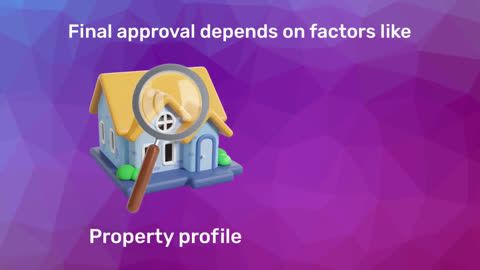Why understanding land record terms matters?
Land records play an essential role in property transactions, inheritance, and legal matters related to real estate. Whether you're buying a plot, applying for a home loan, or settling a property dispute, the correct understanding of these terms ensures a smooth process. Moreover, having a solid grasp of land records terminology helps you verify property details, assess ownership status, and avoid legal complications.Commonly used land record terms
1. Khata/Khewat: A crucial document, the Khata indicates property ownership. It records details like the owner's name, property location, and the extent of ownership. It’s often used when applying for home loans or other financial services.2. Khasra/survey number: The Khasra number is a unique identifier for a plot or piece of land. In revenue and land records, this number helps identify the specific plot and track its history.
3. Khatauni: Khatauni is a register of all the agricultural land held by a person or family. It’s essential for confirming ownership, especially in rural areas.
4. Patta: Patta is a document issued by the government granting the right to occupy and cultivate a piece of land. It plays a significant role in revenue records and is critical for any land transaction.
5. Jamabandi: This document is a crucial part of revenue and land records, recording details of land holdings, ownership, and cultivation. It’s often referred to when verifying land ownership or when transferring property.
6. Mutation (Dakhil Kharij): Mutation is the process of updating land records when ownership is transferred, such as after a sale or inheritance. Understanding this term is essential for ensuring that land records reflect the correct owner, which is critical when securing home loans.
7. Encumbrance Certificate (EC): The Encumbrance Certificate is a vital document that proves that the property is free from any legal or financial liabilities. This certificate is commonly required when applying for home loans or during property transactions.
8. Registry/deed: The registry, or sale deed, is the most critical document in a property transaction. It legally transfers ownership from the seller to the buyer. The registry must be recorded in revenue and land records for the ownership to be legally valid.
9. Fard: A Fard is an extract from the land records that details ownership, liabilities, and the extent of the land. It’s often used when selling land or applying for a loan.
10. Chitta/Adangal: Used mainly in southern states like Tamil Nadu, these records detail land ownership and tenancy, especially for agricultural lands.
Understanding revenue and land records terminology
Revenue and land records terminology might seem overwhelming, but it’s critical for property owners, investors, and home loan applicants. Here’s an overview of key terms related to revenue and land records:1. Land revenue: This term refers to the tax or revenue collected by the government for the ownership and use of land. It forms the basis of maintaining accurate land records and tracking ownership.
2. Tehsil/Taluka: A tehsil or taluka is a subdivision of a district, functioning as an administrative unit where local revenue and land records are maintained.
3. R.O.R. (Record of Rights): The Record of Rights is a document maintained by revenue authorities that lists the rights and liabilities of landowners. It’s crucial for establishing ownership and is often required in legal disputes or loan applications.
4. Settlement officer: A government officer responsible for recording and verifying land ownership details and settling disputes related to land revenue and land records.
5. Revenue court: A court designated to handle disputes related to land revenue, tenancy, and land records. Understanding this term is essential if you ever encounter legal issues concerning land or property.
6. Survey and settlement: This refers to the process of measuring land and updating land records to reflect changes in ownership, land use, or subdivision. Survey and settlement operations are essential for keeping revenue and land records accurate.
7. Nazul land: Nazul land refers to land that belongs to the government but is often leased out or sold. It’s critical to understand this term when dealing with properties situated on such lands.
Procedure for updating revenue and land records
Keeping your revenue and land records updated is crucial for maintaining clear ownership and avoiding disputes. Here’s a general procedure for updating these records:1. Apply for mutation: Whenever there’s a change in ownership, such as after a sale or inheritance, you need to apply for mutation to update the land records.
2. Submit required documents: Documents like sale deeds, inheritance certificates, and tax receipts are needed for updating land records.
3. Verification by revenue officials: Revenue officers verify the documents and conduct a survey if necessary.
4. Record update: Once verification is complete, the updated ownership details are recorded in the revenue and land records.
Maintaining up-to-date records is also essential when applying for financial products like home loans or property insurance.
Common issues with revenue and land records
Some common issues arise while dealing with revenue and land records:1. Discrepancies in records: Mismatches in ownership details or boundaries are common and can lead to disputes.
2. Delay in mutation process: Lengthy and complex procedures for updating records often cause delays, affecting property transactions.
3. Inaccurate surveys: Inaccurate or outdated surveys can lead to conflicts over land boundaries.
4. Lack of digital records: In many regions, land records are not digitized, making it challenging to access accurate information quickly.
Being aware of these issues can help you take proactive steps to ensure your records are accurate and up-to-date.
How to check land records online?
Many states have digitized revenue and land records, making it easier for landowners and buyers to verify information. Here’s how you can check land records online:- Visit your state’s official land records portal.
- Enter details like the district, tehsil, survey number, or owner’s name.
- Access records such as ROR, Fard, or mutation details.
- Download or print copies for reference.
Benefits of understanding land record terminology
1. Transparency in transactions: Accurate understanding of land records terminology ensures smooth transactions and prevents fraud.2. Quick access to loans: When applying for home loans, having clear and updated records makes the process faster and more straightforward.
3. Legal compliance: Knowledge of land records helps you stay compliant with legal requirements, reducing the risk of disputes.
4. Simplified property management: Understanding these terms makes managing property easier, whether it’s through inheritance, sale, or investment.
Understanding commonly used land record terms is crucial for anyone involved in property transactions, be it for buying, selling, or securing financial products like home loans. Accurate revenue and land records are the backbone of clear property ownership, ensuring that transactions are legally sound and dispute-free.
Explore Bajaj Housing Finance Home Loan
If you are considering purchasing a property and need financial assistance, a Bajaj Housing Finance Home Loan is a reliable choice. The loan offers flexible tenures, competitive interest rates, and a simple application process. Whether you’re a first-time buyer or investing in a second property, you can finance your purchase easily and securely.Here are a few reasons why you should choose Bajaj Housing Finance Home Loan:
1. Competitive interest rates: Bajaj Housing Finance offers some of the most competitive home loan interest rates in the market, ensuring that your home loan remains affordable throughout its tenure.
2. Flexible repayment options: With flexible repayment options, borrowers can choose a plan that best fits their financial situation, making it easier to manage monthly payments.
3. Quick and easy processing: The application process for a Bajaj Housing Finance Home Loan is streamlined and user-friendly, ensuring quick approval and disbursement.
Explore Bajaj Housing Finance Home Loan today and experience a seamless way to finance your dream home.




